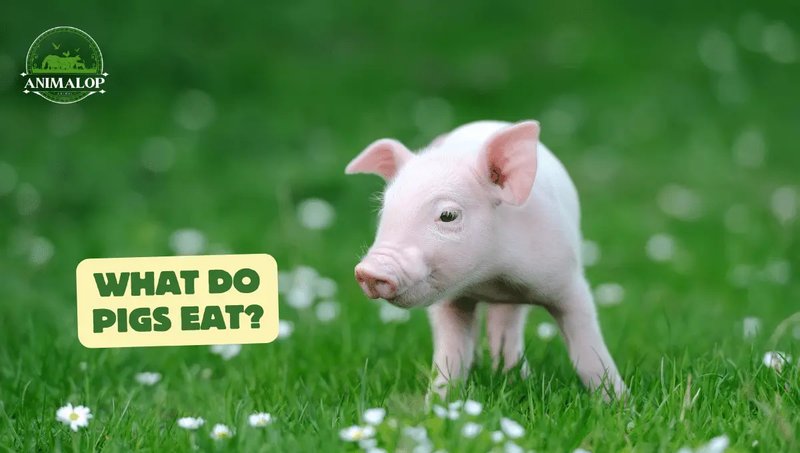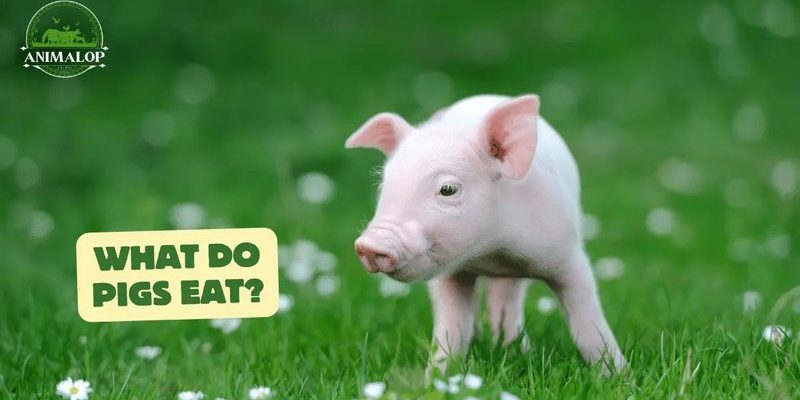
Pigs are omnivores, which means they eat a mix of plants and animals. They can chow down on everything from grains and fruits to table scraps. But not everything is safe for them to eat. Just like some foods are bad for us—even if they taste great—there are certain things that can be harmful to pigs. In this article, we’ll explore what pigs enjoy as a feast and what makes their stomachs turn.
Understanding a Pig’s Natural Diet
Pigs in the wild are quite the foragers. They thrive on a mix of roots, fruits, insects, and small animals. Think of it as their version of a buffet, where they move around and pick whatever looks tasty. This natural behavior is crucial for their health. That’s why when raising pigs—whether for farming or as pets—it’s important to mimic this natural diet as much as possible.
In a farm setting, a well-rounded diet for pigs usually includes grains, vegetables, fruits, and animal products like milk and eggs. You might think of grains as the backbone of a pig’s meal. They provide the energy needed for everything from play to growing big and strong. But, of course, this is just the tip of the iceberg.
Grains: The Energy Boost
Grains are essential in a pig’s diet because they are packed with carbohydrates, which give pigs energy. Common grains include corn, barley, and oats. You might imagine these as the bread and pasta of the pig world. But while pigs love grains, they should be given in moderation. Too much can lead to obesity and other health issues.
When feeding pigs grains, you can either offer them whole or use pelleted feeds that combine various nutrients. Pelleted feeds are designed to ensure pigs get all their vitamins and minerals, but always check the ingredients to ensure they’re high-quality. It’s a bit like checking the label on your favorite snack—it’s all about what’s inside!
Fruits and Vegetables: Nature’s Treats
Fruits and vegetables can be a fantastic addition to a pig’s diet. They provide important vitamins and minerals, and let’s face it, pigs love them! Think of fruits and veggies as the colorful side dishes that make a meal more appealing. Some safe options include:
- Apples
- Carrots
- Pumpkins
- Sweet potatoes
However, just like with us, moderation is key. Too much fruit can lead to digestive problems since many fruits are high in sugar. Always cut them into bite-sized pieces to avoid any choking hazards. It’s a small detail, but it really makes a difference!
Protein Sources: Building Blocks of Health
Pigs need protein for muscle development and overall health. While they can get protein from grains, it’s beneficial to incorporate other sources too. Soybean meal, fish meal, and even leftovers from the kitchen can be good protein sources. Just ensure that whatever you’re feeding your pig is cooked and free from harmful additives.
Here’s a fun comparison: think of protein for pigs like the meat in a balanced meal for us. It’s essential for growth and energy, but the type of meat you choose matters a lot. Keeping it simple and clean is always the best route.
Foods to Avoid: The No-Go List
Okay, now that we know what’s good for pigs, let’s talk about what they should definitely avoid. Just like how some snacks are better left on the store shelf, there are certain foods that are simply unsafe for pigs. Here’s a rundown of some big no-nos:
- Chocolate
- Coffee grounds
- Alcohol
- Onions and garlic
Each of these foods can cause serious health issues for pigs, from poisoning to digestive distress. It’s like serving your friend a dish that’s way too spicy—they’re not going to feel good afterward! Ensuring your pig stays clear of these foods is crucial to their health.
Other Harmful Foods to Watch Out For
Besides the obvious offenders, there are other foods that might seem harmless at first but can be quite dangerous. For example, potato peels and raw beans contain toxins that can be harmful. Even moldy food should never make its way into a pig’s diet. Just because we might have a “little bit of mold” in our food occasionally doesn’t mean it’s safe for them!
Always be mindful of what’s going into their bowl. It’s like being a detective—looking for clues that point to something unhealthy. Your pig will thank you for it!
Feeding Practices: How to Serve Up the Right Meal
Now that we’ve covered what pigs can and can’t eat, let’s talk about how to actually serve their meals. Pigs are creatures of habit, so establishing a feeding schedule is a great way to keep them happy. Regular mealtimes create a sense of routine, which can reduce anxiety and make feeding easier.
When it comes to portion sizes, it’s essential to consider the pig’s age, weight, and activity level. Young, growing pigs will need more food than mature pigs. Keep portions balanced and adjust them as necessary. Imagine trying to fit into an old pair of jeans—what worked once may not fit anymore!
Using a variety of feeding methods can help keep things exciting. Some pigs enjoy foraging, where you scatter their food around so they can root around and find it. It’s a little like a treasure hunt! This not only keeps them active but also taps into their natural behaviors.
Feeding pigs is a bit like preparing a delightful meal that suits their taste buds and health needs. By understanding what they can eat—like grains, fruits, and safe protein sources—you can create a balanced diet that ensures they thrive. Just like any good recipe, you need to pay attention to the ingredients, including avoiding the harmful ones like chocolate and onions.
Ultimately, being mindful of what goes into a pig’s bowl can make all the difference. Pigs are intelligent and social animals that deserve our care and attention, especially when it comes to their diet. With a little effort and knowledge, you’ll not only keep them healthy but also make them incredibly happy. Happy feeding!

